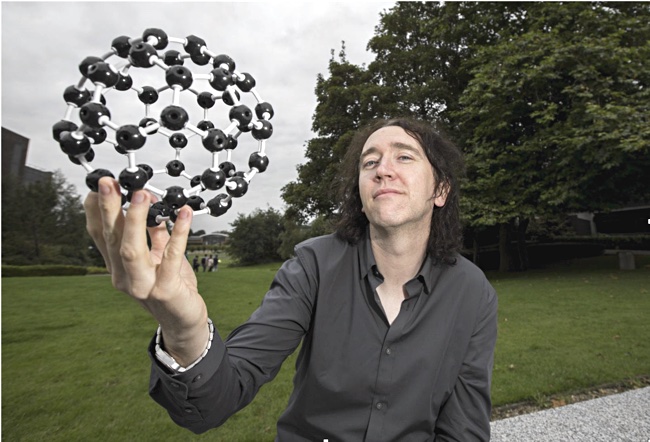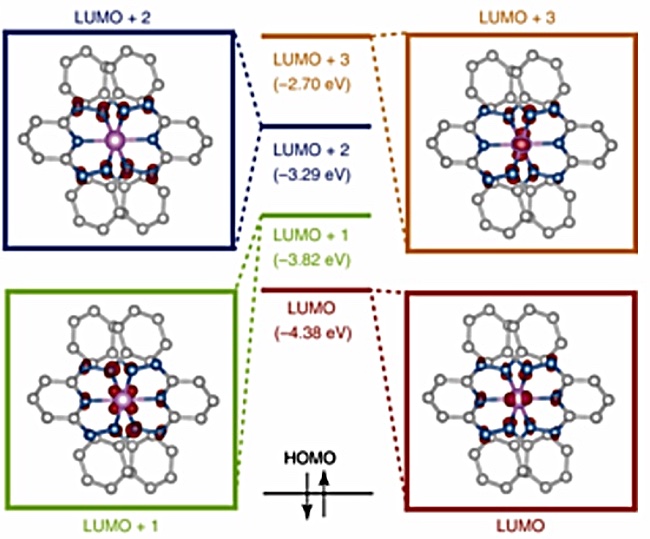Scientists have discovered a ternary (3-bit) memristor which they say is close to mimicking how the human brain works and which could help solve the world’s data storage problems.
Professor Thirumalai Venky Venkatesan of the National University of Singapore, who led the international team of researchers, said in a statement: “We hear a lot of predictions about AI ushering in the fourth industrial revolution. It is important for us to understand that the computing platforms of today will not be able to sustain at-scale implementations of AI algorithms on massive datasets. It is clear that we will have to rethink our approaches to computation on all levels: materials, devices and architecture. We are proud to present an update on two fronts in this work: materials and devices. Fundamentally, the devices we are demonstrating are a million times more power efficient than what exists today.”
Materials and devices
The researchers have invented a metal-organic complex molecule whose electrons can be in one of three states, in a phenomenon called charge disproportionation or electronic symmetry breaking. One of the states has electrons distributed unequally between different sides of the molecule. Such symmetry breakage normally requires extreme pressure or high or low temperature.
The states are stable over time, and can be manipulated at room temperatures using electric fields (voltage), and the molecules can form a device. This could be a 3-bit memristor or a 2-bit memcapacitor, or both. The device scales down to 60 nm². Its “discrete states are optimal for high-density, ultra-low-energy digital computing”, the researchers write in their paper.
Computer simulation
The concept was proved with computer simulation conducted by Damien Thompson of the University of Limerick, using the Irish Centre for High-End Computing supercomputer.

He said in a press release: “We managed to push way beyond industry roadmaps by finding a ternary resistive memory device with three states that are well-separated from each other in terms of conductance and, just as importantly, stay working away perfectly for weeks on end.”
We can envisage the three states as having two symmetrical and one asymmetrical distribution of electrons. Thompson said: “The third asymmetric state is created simply by allowing current to flow through the device and it persists over a broad temperature range (-100 to +100 °C) so it is suitable for most conventional computing as well as future applications emerging from the symbiosis between physics, computing and biology.

“In this new material, ions pulse back and forth between different binding sites on the molecules, which opens up the third state, making it energetically accessible and technologically exploitable.”
Ternary memristor and TLC NAND
We asked Thompson if having a 3-state memristor is like having 3 -bit (TLC) flash cell – insofar as accessing stored data is concerned.
He in turn forwarded our question to Sreetosh Goswami of the National University of Singapore, who he referred to as “the experimental mastermind behind the work”.
Goswami told us: “First of all, flash cells require very high voltage (~10V) and thus use a lot of energy, their storage lifetime is limited (don’t store your family photos ever on flash drives!), and they have a very limited endurance (less than 10,000 write/rewrite cycles). Memristors, on the other hand, consume ultra-low energy and last for 10^11(/12) cycles.”
“Secondly, three bits is actually eight levels; it’s different from a three-level device. A three-level system is something called ‘trit’ where you can define different states as 0,1,2 or -1,0,+1. There are unique advantages of a trit that enables over 19,000 different logic operations for two input variables. (We are currently pursuing circuit designs that will explore and push these ideas further.)”
This prompted further questions from me. “What this says to me is that the ternary memristor would need to be integrated in a non-binary computing system unless, I suppose, the 3 states were given binary values; 00, 01 and 10 for example. That seems odd to me and unlikely to happen. Would you have any views on the need for a non-binary computer system to use ternary memristors?”
Goswami replied: “There are computing architectures that can deal with binary and ternary systems in tandem though they are right now at a concept level. In principle, use of Sheffer ternary operations enhance the computing density by a significant margin. To test those out, you need a reliable 3 state device which has been missing. You will see few such ideas, hopefully soon!
“Additionally, due to the co-existence of meristance and memcapacitance, this device produces self-spiking and even chaos which we are currently using to perform several operations such as Max-cut computation. So, I think there are several things we can do with these devices.”
The Sheffer operation is an aspect of Boolean logic connected to the NAND operation. Max-cut computation refers to finding a part of a graph with the most edges.
According to Professor Venkatesan, “Dr Sreetosh has discovered that he can drive these devices to self-oscillate or even exhibit purely unstable, chaotic regime. This is very close to replicating how our human brain functions.”
Electrical circuit background
Electrical circuits are built from three basic building blocks; the capacitor, the resistor, and the inductor. A memristor, a resistor that stores information, its resistance, when it loses power, is a fourth building block. It was devised and built by HP Labs Fellow Stan Williams in 2008, based on a prediction made by Leon Chua in the 1960s,
HP Labs spent many years trying to productise the invention but failed in its endeavour. Williams left HPE in 2018 and is now a professor of nanotechnology at Texas A&M University and a co-author of the ternary memristor paper .
A memcapacitor is a nonlinear capacitator with immediate response, and also stores information when no power is flowing to the device.
The molecule
The molecule is one of a family of redox active ligands and has a pincer ligand. A ligand is an ion or molecule that binds to a metal atom, sometimes donating electron pairs, and forming a so-called co-ordination complex. There can be several ligands attached to a central atom. Redox refers to a change in the oxidation state of atoms and this involves the movement of electrons between the atoms involved.
Pincer ligands bind to three adjacent co-planar sites with high thermal stability.
Researcher roll call
- Professor Thirumalai Venky Venkatesan, National University of Singapore (NUS), was lead principal investigator of this project.
- Professor Sreebrata Goswami of the Indian Association for Cultivation of Science in Kolkata, India, invented the molecule.
- Dr Sreetosh Goswami, a research fellow at NUS Nanoscience and Nanotechnology Initiative, is the key architect of this paper and is a former graduate student of Professor Venkatesan.
- Associate Professor Damien Thompson at the University of Limerick modelled the interactions between the molecules.
- Professor Stan Willams of Texas A&M University, the original HP Memristor builder, is a co-author of the paper.
Their paper is entitled “Charge disproportionate molecular redox for discrete memristive and memcapacitive switching,” and is published in Nature Nanotechnology (2020). DOI: 10.1038/s41565-020-0653-1







